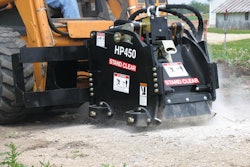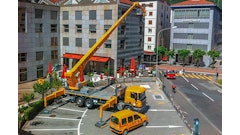The total number of U.S. jobs in the Bureau of Labor Statistics’ July Employment Situation report increased by 215,000, close to the consensus expectation of 225,000. The unemployment rate stayed the same as in June, at 5.3%.
While there are still too many adults stuck in long-term unemployment and many workers remain dissatisfied with part-time jobs, craving full-time positions instead, the overall U.S. labor market has clearly passed well beyond recovery and is now displaying rosy health.
For verification, one need only look to initial jobless claims. Relatively speaking, very few Americans are being laid off at this time.
For the week ending July 18, the number of first-time unemployment insurance seekers in the U.S. dropped to only 255,000, its lowest level in more than four decades
The last time the figure was as constrained occurred towards the end of 1973, the year when OPEC first seized control of world energy markets.
The 1973 comparison becomes even more impressive when one considers that the size of the work force back then was much smaller than it is today.
An initial jobless claims figure of less than 300,000, maintained over several weeks, usually signals a monthly jobs increase of 200,000-plus.
Initial jobless claims have been below 300,000 for the past 22 weeks in a row.
The private services-providing sector accounted for 193,000, or 90%, of the 215,000 net gain in employment in July. Among major sub-sector contributors were:
- retail trade -- +36,000
- leisure and hospitality -- +30,000
- health care -- +28,000
- financial services -- +17,000
The 30,000 increase in leisure and hospitality employment was almost all provided by “food services and drinking places” (+29,000). In health care, more than half of the 28,000 increase originated with hospitals.
Government hiring rose by 5,000 jobs in July, all at the local level (+8,000), as the states cut staff (-3,000) and Washington stayed neutral.
Construction Industry Adds 6,000 Jobs in July
There’s stark confirmation of the employment havoc in the energy patch created by the steep drop in world oil prices. The jobless rate in “mining, quarrying and oil and gas extraction” has soared to a bearish 8.1% this year from a bullish 3.0% last year.
Odds-makers are betting there’s a 50-50 chance the Federal Reserve will begin to lift its policy-setting interest rate, the federal funds rate, in September. The central bank’s actions are supposed to be directed towards establishing and maintaining full employment and achieving a level of inflation that is moderate but not excessive. (Modest inflation can be good when it helps firms and individuals pay off fixed debt easier.
At the moment, one could easily conclude that the fed has realized only half its mandate. The year-over-year all-items Consumer Price Index (CPI) is a miniscule +0.1%.
Yes, the U.S. labor market has become tighter, but it’s not showing up in earnings yet. Year-over-year average hourly earnings throughout the U.S. private sector in July were about where they’ve been throughout 2015 so far, +2.1%. The performance of average weekly earnings was only a little stronger, +2.4%. (The comparable figures for the construction sector were +2.6% and +1.8%).
The fact prices for internationally-traded commodities are mostly either inert or falling is a further check on inflation.
Besides, there’s a bigger picture to consider.
Most consumers have only recently begun to feel confident again.
Single-family housing starts remain well-below their pre-recession historical level.
What problems in the U.S. economy will a rate hike at this time solve?
“Real” (i.e., inflation-adjusted) gross domestic product (GDP) change in the first quarter of this year was originally estimated to be -0.2% annualized. It has since been revised back above zero to +0.6%.
Second quarter GDP growth was a more robust 2.3%, but that can still hardly be called “runaway.” By comparison, Q1 2014 was -0.9%, followed by +4.6% in Q2 and +4.3% in Q3.
Higher U.S. yields threaten to jack up the value of the greenback even more, further inhibiting the export sales of manufacturers
The fed would surely like to lift the federal funds rate off the floor (i.e., in a range of 0.00% to 0.25% now), but it might well be wiser to “keep its powder dry” and wait until it’s clearer the rest of the world is on a steadier growth path
North of the border, there was a small gain in total employment in July, +6,000 jobs, according to Statistics Canada. The official unemployment rate was 6.8%, the exact same level as during the previous five months.
Alberta’s oil- and gas-dependent economy saw a bump in its unemployment rate to 6.0% from 4.5% a year ago.
Moving in the opposite direction, Ontario’s jobless figure eased from 7.5% in July of last year to 6.4% at present.
As for year-over-year percentage changes in employment, Canada currently falls short of the U.S. according to four key measures: total, +0.9% versus +2.1%; services, +1.3% relative to +2.6%; construction, 0.0% compared with +3.8%; and manufacturing, -0.3% to +1.3%.


















